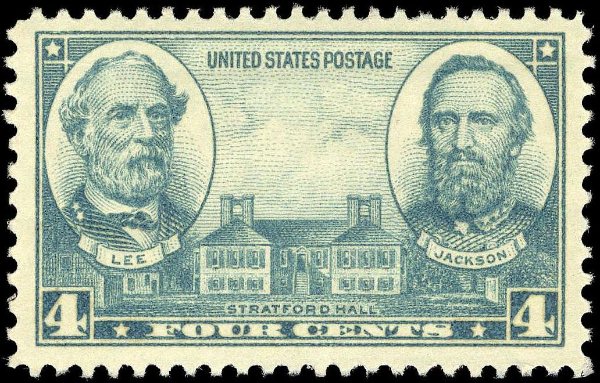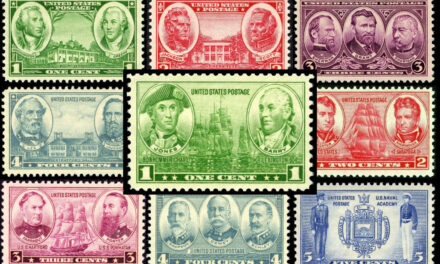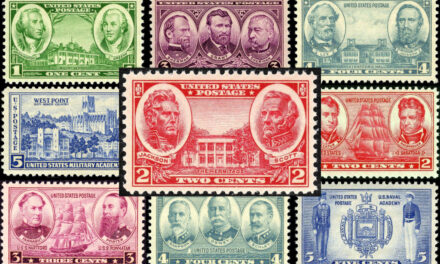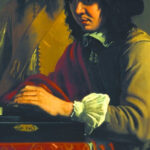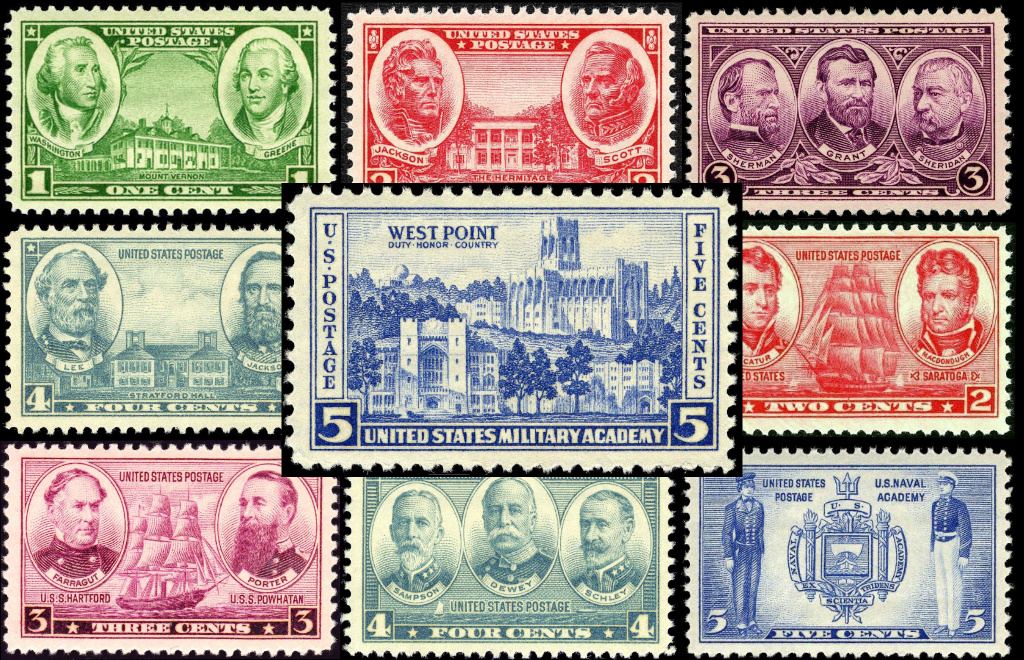
5-Cent 1937 Army Stamp: United States Military Academy at West Point
The 5-cent 1937 Army stamp honors the United States Military Academy at West Point, New York, where many of the most prominent officers of the United States Army have been educated and trained. The ultramarine stamp features a view of several buildings on the West Point campus—Washington Hall, North Barracks, the Cadet Chapel, and the Old Observatory—with the Academy’s motto “Duty • Honor • Country.”
The West Point stamp is the fifth in a series of five stamps that were issued between December 1936 and May 1937 to commemorate some of the most important Army officers in American history up to that point—many of whom were West Point graduates. A parallel series of Navy commemoratives, including the 5-cent Navy stamp featuring the U.S. Naval Academy at Annapolis, was issued on the same dates as the Army stamps.
The Design and Issuance of the 5-Cent 1937 Army Stamp

The 5-cent 1937 Army stamp features the United States Military Academy at West Point. (U.S. Post Office — U.S. Bureau of Engraving and Printing, Public domain, via Wikimedia Commons)
The Other Stamps in the 1936–1937 Army Series
A Brief History of West Point
The United States Military Academy is located on the bank of the Hudson River at West Point, New York, some 50 miles (80 km) north of New York City. It is the oldest service academy in the nation, founded by an Act of Congress in 1802.

The Great Chain at the United States Military Academy, West Point. (Daderot, Public domain, via Wikimedia Commons)
West Point During the Revolutionary War
The site was first occupied by the Connecticut Militia in January 1778, making West Point the longest continually occupied military post in the United States. A Great Chain was built across the Hudson at West Point to prevent British ships from navigating farther upriver, and the construction of additional fortifications was supervised by Polish military engineer Tadeusz Kosciuszko.
George Washington had his headquarters at West Point for much of 1779. The following year, the treasonous General Benedict Arnold plotted to sell the fort to the British.
The Creation of the Military Academy at West Point
After the Revolutionary War, a small garrison of soldiers remained at West Point. President Washington urged the creation of an academy to teach the art and science of war, but Secretary of State Thomas Jefferson and many in Congress argued against it. An informal training school was established at West Point, but an official Academy was not authorized by Congress until 1802, when Jefferson was President.
The curriculum was based on science and engineering, and Academy graduates built much of the nation’s transportation infrastructure in the early years. Colonel Sylvanus Thayer, the superintendent of West Point from 1817 to 1833, is recognized as the “Father of the Military Academy” for his work developing the Academy’s curriculum and teaching methods, as well as the emphases on discipline and honor that are the hallmarks of the institution today.
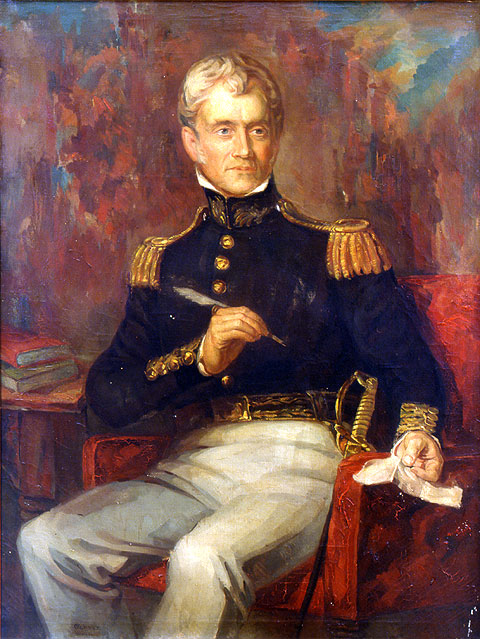
Portrait of Sylvanus Thayer, the father of the U.S. Military Academy. (Robert Walter Weir, Public domain, via Wikimedia Commons)
The Expansion and Modernization of the Academy
The prestige of West Point was enhanced during the Mexican-American War (1846-1848), when numerous graduates received battlefield promotions and commendations for bravery. Virtually all notable generals in the Civil War, in both the Union and the Confederate armies, were West Point graduates.
The Academy accelerated graduations to meet the need for officers in the Spanish-American War and World War I. After World War I, Brigadier General Douglas MacArthur became superintendent and began a program of sweeping academic reform, modernization, and expansion. In 1935, Congress increased the size of the Corps of Cadets to 1,960, and as this stamp was issued, another building program was underway.
The Campus Buildings Pictured on the 5-Cent 1937 Army Stamp
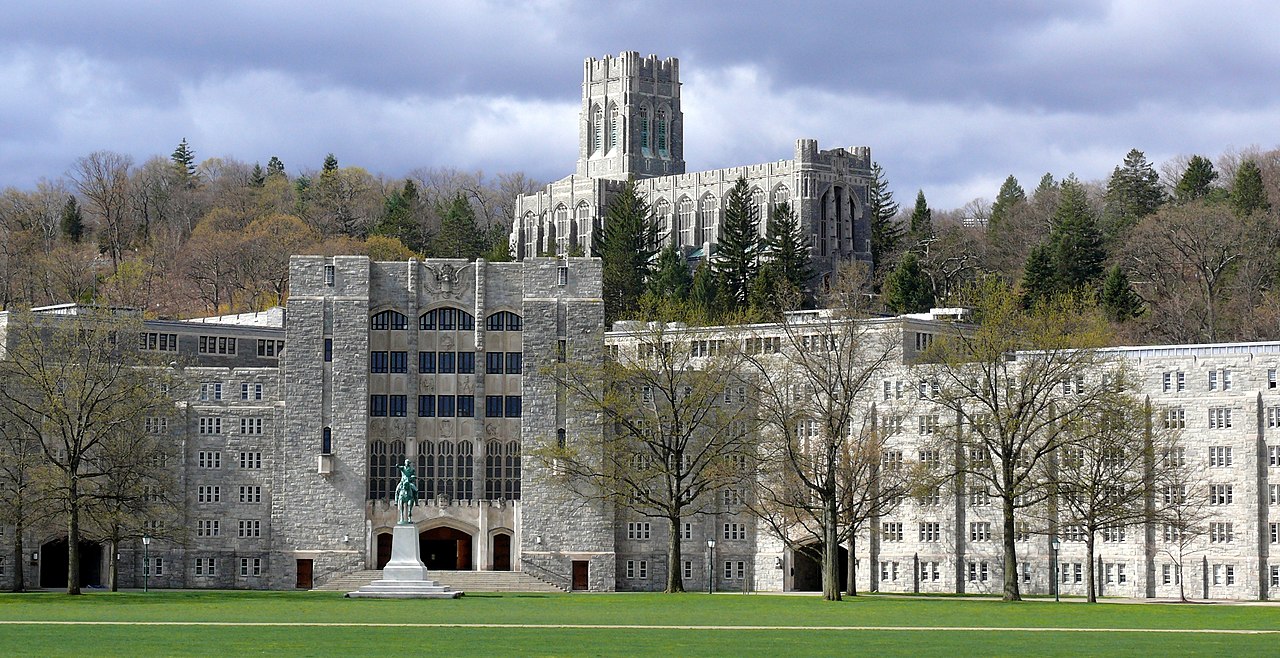
Washington Hall, with the Statue of George Washington in front and the Cadet Chapel on the rocks above. (Copyright © Ad Meskens, via Wikimedia Commons)
Washington Hall, built in 1929 and expanded in 1964, contains the Cadet Mess, where the entire Corps of Cadets eats family style meals together at breakfast and lunch. The mess hall is decorated with military and historic artifacts, and a huge mural depicts weapons used in twenty of the most decisive battles in history. Washington Hall is also home to several academic departments.
The Cadet Chapel was designed by the firm of Crum, Goodhue, and Furgeson (CGF) after a design competition in 1903. Built of native granite, the chapel was dedicated in 1910. The chapel’s organ is the largest church organ in the world. The large stained glass sanctuary window is inscribed with the Academy’s motto, “Duty, Honor, Country.”
The North Barracks was also built by CGF but was subsequently demolished and replaced by the MacArthur Barracks in 1972.
The Observatory was built in 1841. In 1880 it was moved to the location at the top of the hill, as depicted on the stamp, in order to make room for a train tunnel. The observatory was demolished in the 1950s.
Visiting West Point

Aerial view of the U.S. Military Academy at West Point. (USMA Public Affairs Office, Public domain, via Wikimedia Commons)
To experience West Point for yourself and learn more about its history, plan a visit. West Point is located about 40 miles north of New York City and can be conveniently reached by car, bus, or train.
The Visitors Center and the West Point Museum are open to the public daily, except for a few major holidays. From the Visitors Center, you can take a guided tour of West Point (partially by bus, partially on foot). Several different tours are offered. All include a visit to the Cadet Chapel, Battle Monument, and other points of interest.
Because West Point is an active facility of the U.S. Military, tour times can vary, and the Chapel and other venues may be closed at the discretion of the Garrison Commander.
See the West Point website for more information about visiting West Point.
A Window on American History
The 5-cent 1937 Army stamp featuring the United States Military Academy at West Point honors an institution that has educated and trained many of America’s greatest leaders. Two U.S. presidents, Ulysses S. Grant and Dwight D. Eisenhower, were West Point alumni.
This stamp can provide a quick introduction to the Academy and its history. Learning about commemorative postage stamps like this one is a great way to learn about history.
Copyright © Brian Lokker 2011, 2024. An earlier version of this article was published on HubPages.com in 2011 and was subsequently featured on HobbyLark.com.




